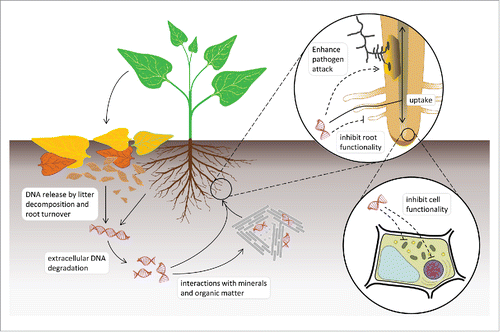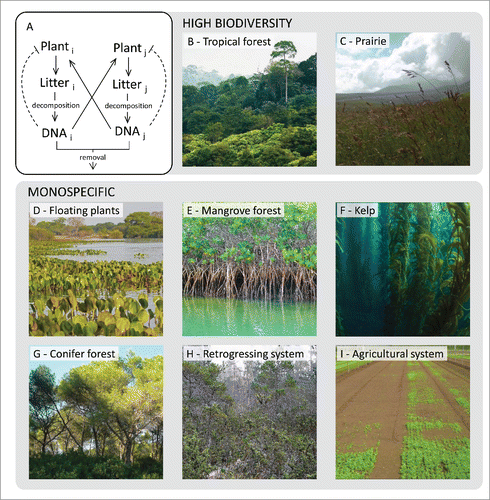Figures & data
Figure 1. Schematic representation of self-DNA soil dynamics and interactions with plant functionality.

Figure 2. Ecological consequences of plant soil negative feedback mediated by self-DNA. (A) Diagram of the dynamics of DNA release in soil (solid lines) and species specific inhibitory effects (dashed lines). (B-C) Examples of high biodiversity ecosystems where the accumulation of exDNA from litter decomposition favors species coexistence. D-I) Examples of monospecific ecosystems: the occurrence of monodominance can be ascribed to the removal of self-DNA by either water (D-F) or fast degradation due to either acidic soil conditions or burning (G); the absence of competing species coupled with self-DNA accumulation leads to a decrease in the fitness of both natural (H) and agricultural (I) systems. Authors of the images can be found in the acknowledgments section.

